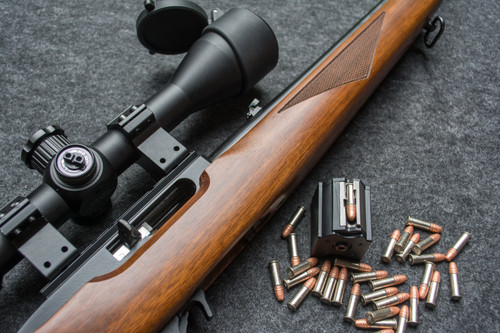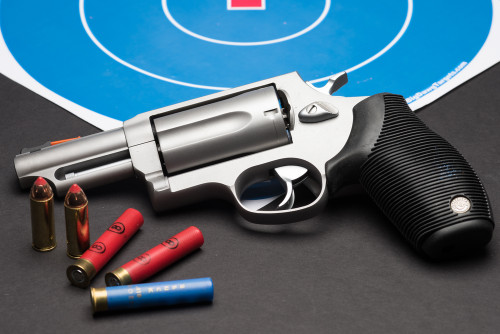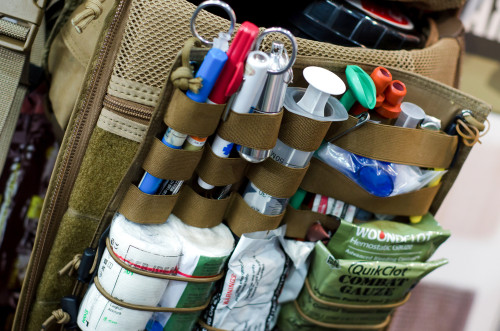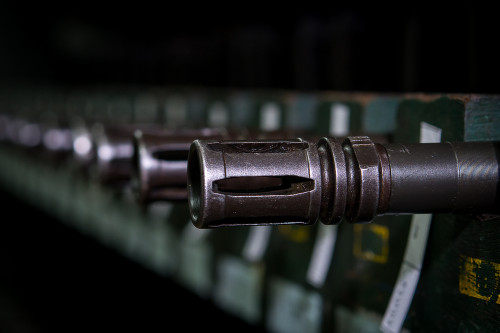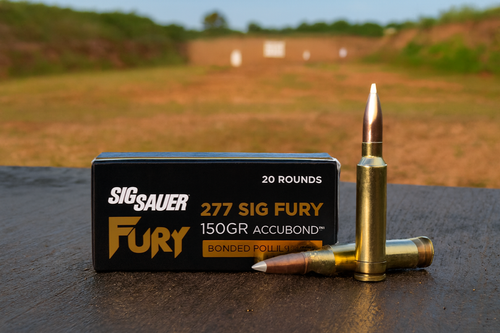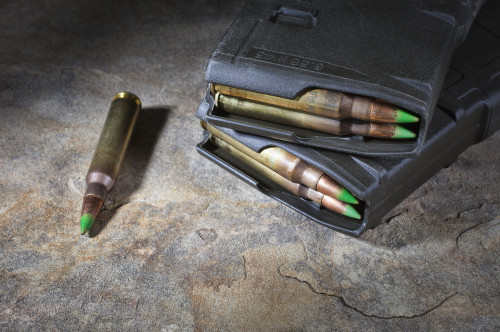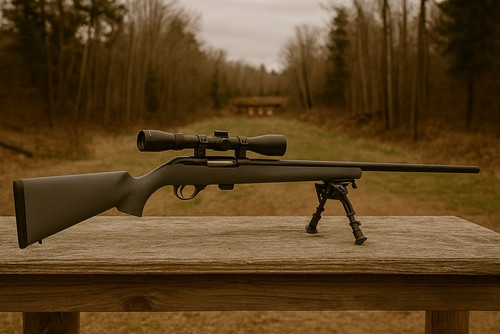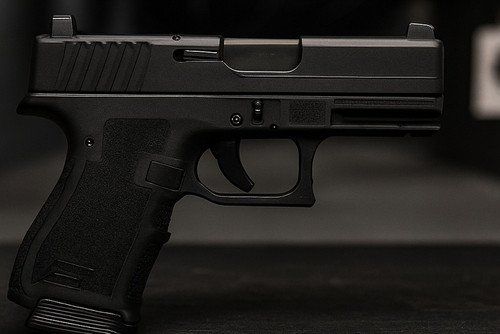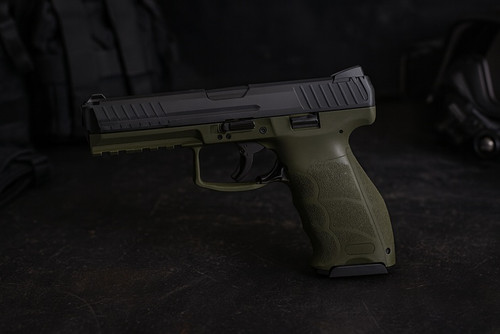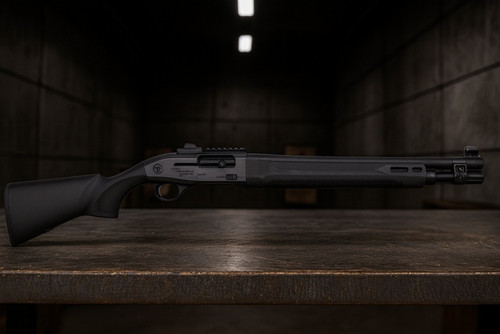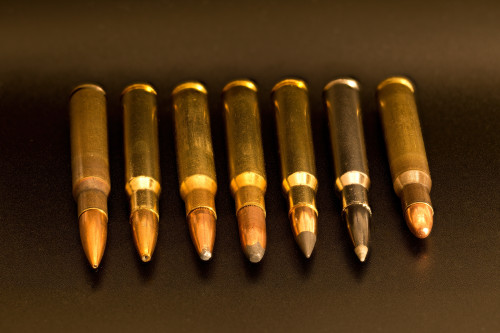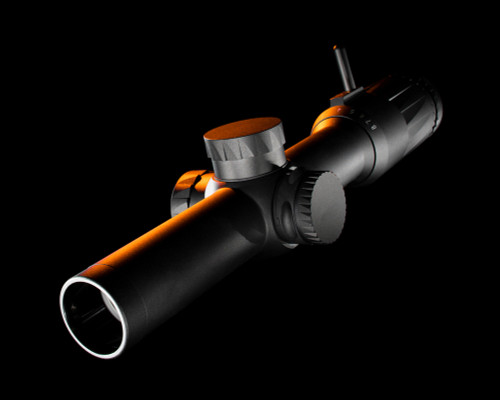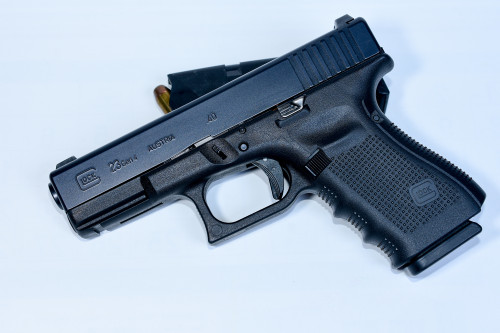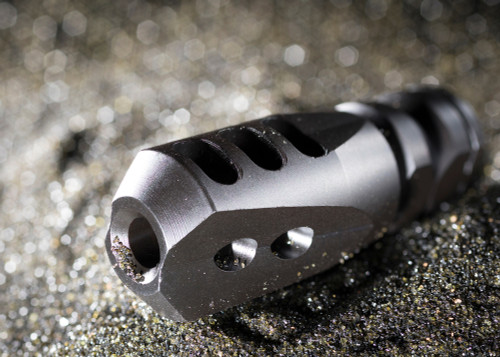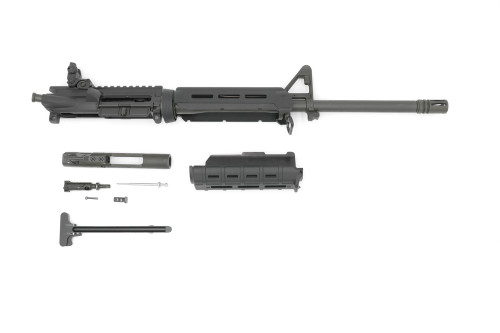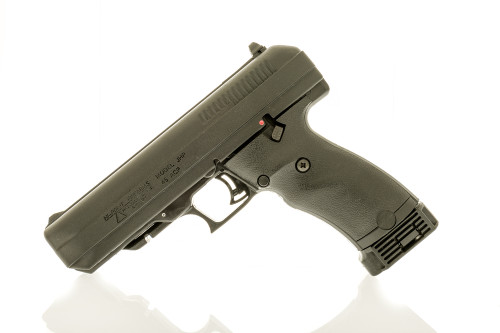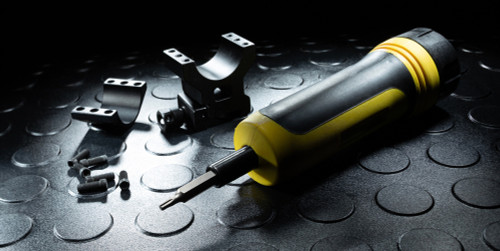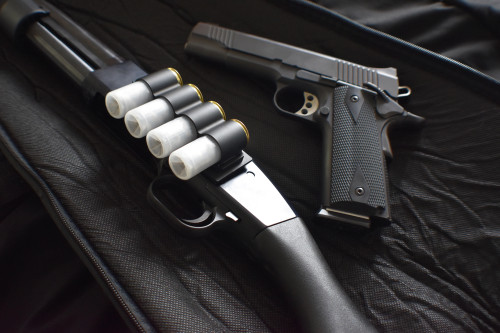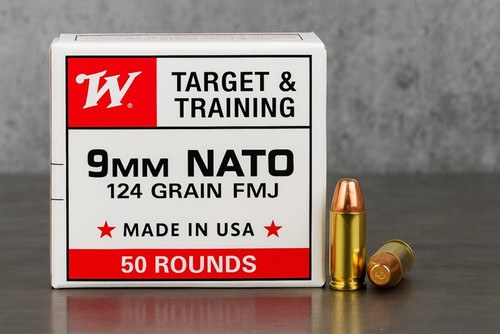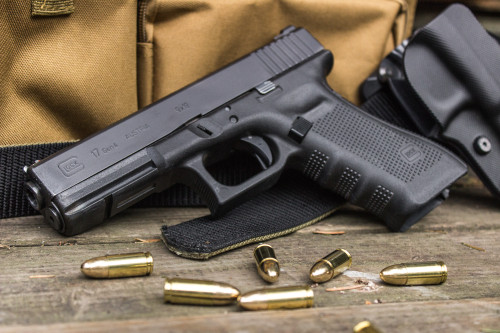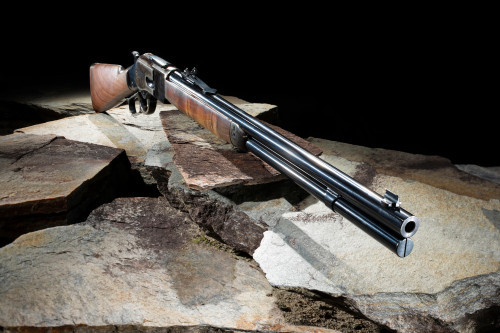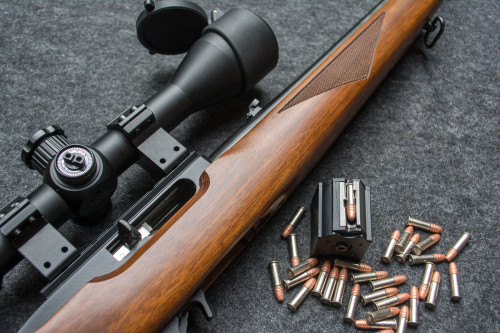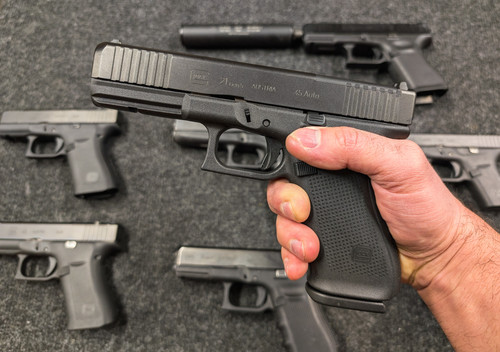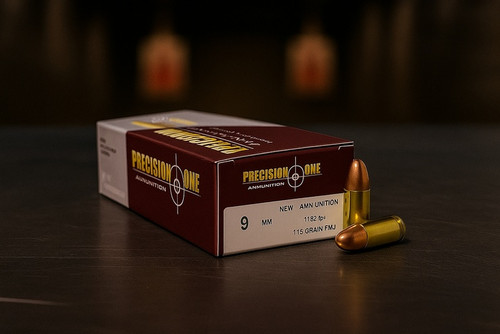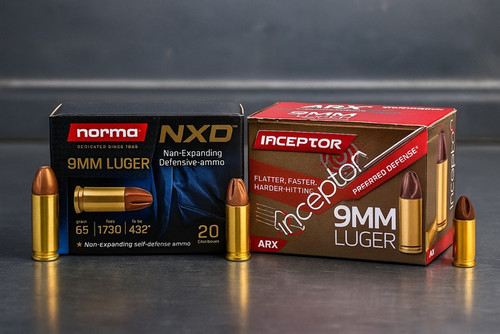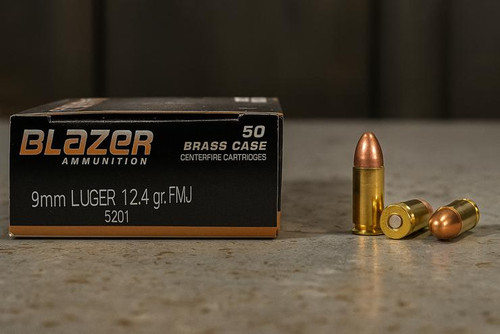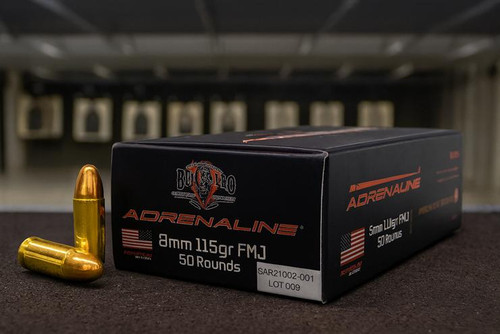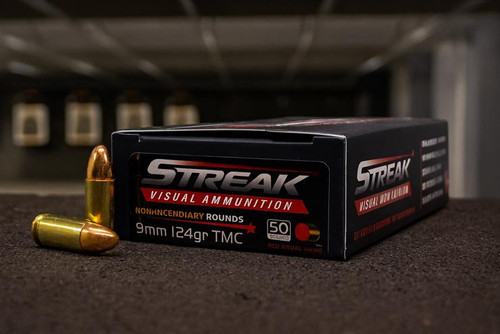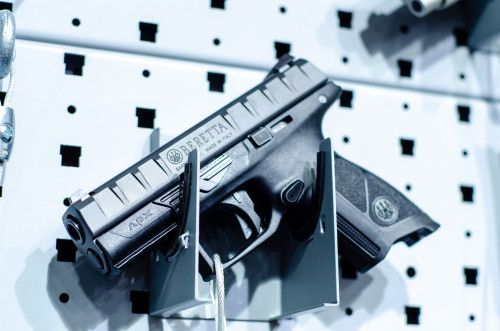The History of the M1 Garand and Its Evolution
Introduction
The M1 Garand, often recognized as one of the most significant military rifles of the 20th century, is playing a pivotal role in the evolution of modern infantry weapons. Developed during a time when the nature of warfare was rapidly changing, the M1 Garand set new standards for reliability, accuracy, and firepower. This blog takes a look into the history of the M1 Garand, its development and how it paved the way for the M14, a rifle that sought to improve upon its predecessor's legacy and help form the modern DMR. This will be the first in a series of blogs on the M1and how it has led the way for the modern DMR used on today’s battlefields.
The Genesis of the M1 Garand
The story of the M1 Garand began in the early 20th century. Before its advent, the standard issue rifle for the United States military was the bolt-action M1903 Springfield. While reliable and accurate, the M1903 had a slow rate of fire, which became increasingly disadvantageous as semi-automatic weapons emerged on the battlefield.
In 1919, the U.S. Army began seeking a semi-automatic rifle to replace the M1903. The goal was to develop a weapon that could provide the infantry with greater firepower and efficiency. Enter John C. Garand, a Canadian-born engineer working at the Springfield Armory. Garand's innovative design, which would eventually become the M1, stood out in the competitive trials of the 1920s and 1930s. While some revisions were required, it ultimately became the standard for an effective combat rifle.
Development and Adoption
Garand's design faced numerous challenges and revisions. One of the major hurdles was developing a reliable and durable gas-operated system. After extensive testing and
modifications, Garand's rifle was finally adopted by the U.S. Army on January 9, 1936, as the M1 Garand. By the end of 1941 the M1 Garand was the service weapon of the U.S. Army. The M1 Garand was made in large numbers during World War II, at which time approximately 5.4 million were made and were used by every branch of the United States military.
The M1 Garand featured an eight-round en-bloc clip system, which allowed for rapid reloading compared to traditional bolt-action rifles. This semi-automatic capability provided a significant advantage in terms of firepower. The rifle's .30-06 Springfield cartridge offered excellent range and stopping power, making it a formidable weapon on the battlefield during that era in military history. During World War II the M1 rifle's semi automatic operation gave United States infantrymen a significant advantage in firepower and shot-to-shot recovery time over enemy infantrymen armed primarily with bolt-action rifles.
The semi-automatic operation and reduced recoil allowed soldiers to fire eight rounds as quickly as they could pull the trigger, without having to move their hands on the rifle and therefore disrupt their firing position and point of aim. The Garand's fire rate, in the hands of a trained soldier, averaged 40–50 accurate shots per minute at a range of 300 yards. At ranges over 500 yards, a battlefield target is hard for the average rifleman to hit. Therefore, 500 yards was considered the maximum effective range, even though the rifle proved to be accurate at much greater distances.
The M1 Garand in World War II
The M1 Garand saw extensive service during World War II. It was the standard-issue rifle for U.S. troops and quickly earned a reputation for its reliability and effectiveness. Soldiers appreciated its semi-automatic operation, which allowed them to fire more rounds quickly and with greater accuracy. General George S. Patton famously called the M1 Garand "the greatest battle implement ever devised."
The rifle's impact was felt in various theaters of war, from the beaches of Normandy to the islands of the Pacific. Its ability to provide sustained fire gave U.S. infantry units a significant edge in combat situations, contributing to the Allied victory. The M1 Garand's robust design and ease of use made it a favorite among soldiers, and its legacy was cemented as a critical tool in the U.S. military arsenal.
Post-War Developments and the Need for a New Rifle
After World War II, the M1 Garand continued to serve as the standard-issue rifle during the Korean War. However, the changing dynamics of warfare and advances in small arms technology highlighted the need for a more modern rifle. The M1 Garand, while revolutionary in its time, had certain limitations. Its eight-round capacity and relatively heavy weight were seen as drawbacks in the context of evolving military needs.
The development of intermediate cartridges, like the 7.62x39mm used by the Soviet AK-47, showcased the potential benefits of smaller, lighter ammunition that still offered effective range and stopping power. This shift in thinking led the U.S. military to consider developing a new rifle that could address the limitations of the M1 Garand while incorporating the advantages of intermediate cartridges and add to an edge during combat situations.
The Birth of the M14
In the 1950s, the U.S. military initiated a series of trials to develop a new rifle. The goal was to create a weapon that could serve as a battle rifle and a light machine gun, replacing not only the M1 Garand but also the Browning Automatic Rifle (BAR) and the M1 Carbine. The result was the M14, a rifle that sought to integrate the lessons learned from the M1 Garand with modern advancements in firearms technology.
The M14, officially adopted in 1959, retained many features of the M1 Garand, including its gas-operated action and rotating bolt. However, it introduced several key improvements. The most notable was its chambering for the 7.62x51mm NATO cartridge, a more compact and efficient round compared to the .30-06 Springfield. This allowed for a higher ammunition capacity and reduced recoil, making the rifle easier to control during rapid fire engagements at both mid and long range.
Design and Features of the M14
The M14 featured a 20-round detachable box magazine, which was a significant improvement over the M1 Garand's eight-round en-bloc clip. This increased ammunition capacity provided soldiers with greater firepower and reduced the frequency of reloading. The rifle also included a selective-fire capability, allowing it to be used in both semi-automatic and fully automatic modes, further enhancing its versatility on the battlefield.
The M14's design incorporated a longer barrel than the M1 Garand, improving its accuracy and range. It also featured a fiberglass-reinforced plastic stock, which was lighter and more durable than the traditional wooden stocks used in the M1 Garand. These enhancements made the M14 a more adaptable and robust weapon, suitable for a variety of combat scenarios in most theaters of operation.
Operational Use and Legacy
The M14 saw extensive service during the early years of the Vietnam War. However, it quickly became apparent that the rifle had its own set of challenges. Its length and weight made it less suitable for the dense jungle environments of Vietnam, where close-quarters combat was common. Additionally, the M14's full-auto fire mode eventually proved difficult to control, leading to issues with accuracy and ammunition consumption.
Despite these challenges, the M14 earned respect for its accuracy and stopping power. It remained in service in various roles, including as a sniper rifle and designated
marksman rifle, long after being replaced as the standard-issue rifle by the M16 in 1967. The M14's robust design and powerful cartridge made it a favorite among expert marksman and snipers, ensuring its continued use in specialized roles.
Influence on Modern Firearms
The M1 Garand and M14 have left an everlasting mark on the development of modern firearms. The Garand's semi-automatic action and en-bloc clip system were revolutionary for their time, influencing the design of subsequent military rifles. The M14, while facing certain operational challenges, bridged the gap between the Garand and the M16, incorporating lessons learned from both rifles to create a more versatile and capable weapon.
The M14's influence is still seen today in the development of modern battle rifles and designated marksman rifles. Its legacy lives on in the civilian market as well, with numerous companies producing semi-automatic variants of the M14 for hunting and target shooting. The rifle's enduring popularity is a testament to its design and effectiveness, with more to come on that subject in a future blog.
Conclusion
The journey from the M1 Garand to the M14 is a fascinating tale of innovation, adaptation, and evolution. The M1 Garand, with its groundbreaking semi-automatic action and reliability, set new standards for military rifles and played a crucial role in the Allied victory during World War II. Its successor, the M14, sought to build upon this legacy by incorporating modern advancements and addressing the changing needs of infantrymen during warfare to become quicker and more effective during engagements.
While the M14 faced its own set of challenges, its design and features left a lasting impact on the development of firearms. The lessons learned from both the M1 Garand and the M14 have shaped the evolution of modern rifles, influencing the design and functionality of weapons used by militaries and civilians alike.
The M1 Garand and the M14 are more than just rifles; they are symbols of the relentless pursuit of improvement and the quest for technological advancement in the face of evolving challenges from military history both past and present. Their histories are intertwined with the stories of the soldiers who wielded them and the battles they fought, leaving an enduring legacy that continues to resonate in the world of firearms today. See you in the next blog where we will dive into the M14!!




 Kyle Lewis
Kyle Lewis
